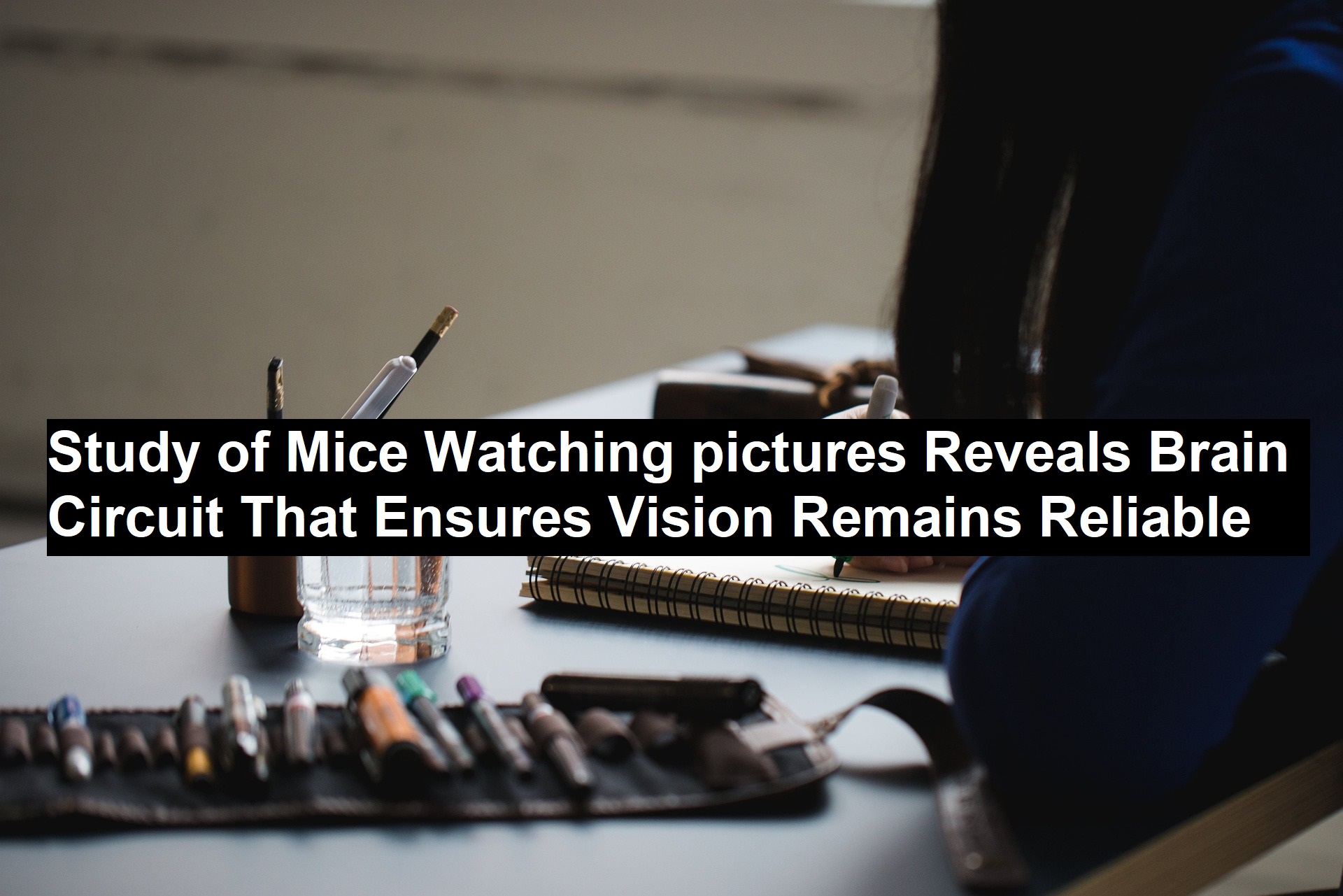A study of mice watching pictures shows our brain cells calculate on a circuit of inhibitory neurons to help insure that the same images are represented constantly. When it comes to recycling vision, the brain is full of noise. Information moves from the eyes through numerous connections in the brain. immaculately, the same image would be reliably represented the same way each time, but rather different groups of cells in the visual cortex can come stimulated by the same scenes.
So how does the brain eventually insure dedication in recycling what we see?
A platoon of neuroscientists in the Picower Institute for Learning and Memory at MIT set up out by watching the smarts of mice while they watched pictures. What the scientists discovered is that while groups of “ excitatory ” neurons respond when images appear, thereby representing them in the visual cortex, exertion among two types of “ inhibitory ” neurons combines in a neatly arranged circuit behind the scenes to apply the demanded trustability. The experimenters weren’t only suitable to see and dissect the patterns of these neurons working, but once they learned how the circuit operated they also took control of the inhibitory cells to directly manipulate how constantly excitatory cells represented images.
“ The question of trustability is monstrously important for information processing and particularly for representation — in making vision valid and dependable, ” says Mriganka Sur. He’s the Newton Professor of Neuroscience in MIT’s Department of Brain and Cognitive lores and elderly author of the new study in the Journal of Neuroscience. “ The same neurons should be firing in the same way when I look at commodity, so that the coming time and every time I look at it, it’s represented constantly. ”
exploration scientist Murat Yildirim and former graduate pupil Rajeev Rikhye led the study, which needed a number of specialized feats. To watch hundreds of excitatory neurons and two different inhibitory neurons at work, for case, they demanded to wangle them to flash in distinct colors under different colors of ray light in their two- photon microscope. Taking control of the cells using a technology called “ optogenetics ” needed adding indeed more inheritable manipulations and ray colors. also, to make sense of the cellular exertion they were observing, the experimenters created a computer model of the triplex circuit. “ It was instigative to be suitable to combine all these experimental rudiments, including multiple different ray colors, to be suitable to answer this question, ” Yildirim says.
The platoon’s main observation was that as mice watched the same pictures constantly, the trustability of representation among excitatory cells varied along with the exertion situations of two different inhibitory neurons. When trustability was low, exertion among parvalbumin- expressing( PV) inhibitory neurons was high and exertion among somatostatin- expressing( SST) neurons was low. When trustability was high, PV exertion was low and SST exertion was high. They also saw that SST exertion followed PV exertion in time after excitatory exertion had come unreliable.
PV neurons inhibit excitatory exertion to control their gain, Sursays.However, excitatory neurons would come logged amid a flood tide of incoming images and fail to keep up, If they did n’t. But this gain repression supposedly comes at the cost of making representation of the same scenes by the same cells less dependable, the study suggests. SST neurons meanwhile, can inhibit the exertion of PV neurons. In the platoon’s computer model, they represented the triplex circuit and were suitable to see that SST neuron inhibition of PV neurons kicks in when excitatory exertion has come unreliable.
The platoon was suitable to directly show this dynamic by taking control of PV and SST cells with optogenetics. For illustration, when they increased SST exertion they could make unreliable neuron exertion more dependable. And when they increased PV exertion, they could ruin trustability if it was present.
Importantly, however, they also saw that SST neurons can not apply trustability without PV cells being in the blend. They hypothecate that this cooperation is needed because of differences in how SST and PV cells inhibit excitatory cells. SST cells only inhibit excitatory cell exertion via connections, or “ synapses, ” on the spiny tendrils called dendrites that extend far out from the cell body, or “ soma. ” PV cells inhibit exertion at the excitatory cell body itself. The key to perfecting trustability is enabling further exertion at the cell body. To do that, SST neurons must thus inhibit the inhibition handed by PV cells. Meanwhile, suppressing exertion in the dendrites might reduce noise coming into the excitatory cell from synapses with other neurons.
“ We demonstrate that the responsibility of modulating response trustability doesn’t lie simply with one neuronal subtype, ” the authors wrote in the study. “ rather, it’s the united dynamics between SST and PV( neurons) which is important for controlling the temporal dedication of sensitive processing. A implicit biophysical function of the SSTàPV circuit may be to maximize the signal- to- noise rate of excitatory neurons by minimizing noise in the synaptic inputs and maximizing spiking at the soma. ”
Sur notes that the exertion of SST neurons isn’t just modulated by automatic feedback from within this circuit. They might also be controlled by “ top-down ” inputs from other brain regions. For case, if we realize a particular image or scene is important, we can volitionally concentrate on it. That may be enforced by signaling SST neurons to apply lesser trustability in excitatory cell exertion. Reference “ Reliable sensitive Processing in Mouse Visual Cortex through Cooperative relations between Somatostatin and Parvalbumin Interneurons ” by RajeevV. Rikhye, Murat Yildirim, Ming Hu, Vincent Breton- Provencher and Mriganka Sur, 20 October 2021, JNeurosci.
